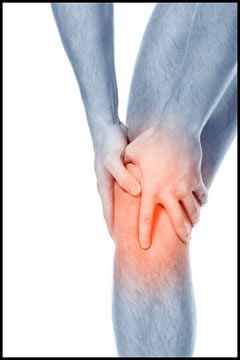The ART of Running

Running injuries are commonly attributed to faulty biomechanics and errors in training methods. Faulty training techniques such as the rapid build-up of mileage, running on worn out shoes, not stretching, or ignoring our body's messages and continuing to run through pain. Although these important aspects of a running program should be addressed, runners should consider the cumulative effects that thousands of repetitive motions have on our bodies. Even with good biomechanics and excellent training, runners are exposed to a considerable amount of cumulative trauma. Like walking, running is not a simple activity, since it involves the use of a large number of muscles, tendons, nerves and primary body structures. Runners generally seek to improve their performance but are often held back by injuries or biomechanical dysfunctions.
Injuries to the soft tissues (ligament, muscle, tendon, fascia, nerves) result in inflammation and swelling of the tissue. Studies have now shown that repetitive contraction of muscles, resulting in tight muscles will lead to the same restricted scar tissue formation.
As a runner for many years I developed Achilles tendonitis. After years of trying ice, ultrasound, massage, stretching, orthotics and injections, I still had recurring Achilles pain.
As a clinician in sports chiropractic, I have studied and tested many soft tissue treatments that generally fell short in resolving this type of chronic injury.
In searching for answers to be able to run again, I was introduced to a sports chiropractor and aeronautical engineer developing an active treatment and evaluation of the soft tissue injuries in the athlete. This treatment was called Active Release Technique (ART), which loosens the muscles by stretching them as they are put through their full range of motion. This ensures a more thorough and precise stretch to the injured soft tissues that cannot be corrected with more passive methods of care.
The specialist put me through an in depth exam finding the immediate source of my injuries were due to very tight calf muscles pulling my Achilles into tension. I was then put through an in depth gait analysis where he determined the hamstrings being too tight was the true source of my Achilles problems. He explained to me that by having tight hamstrings I was unable to straighten the knee, causing to land on a flat foot, instead of heel to toe. This was causing an overload on the calf muscles and Achilles tendons.
After six ART sessions my Achilles pain was gone. With regular stretching and improved strengthening of these once tight and weakened muscles, my problems have not returned.
In our bodies, muscles, tendons and joints make up a continuous kinetic chain that works to keep the muscles and fascia from the ankles to the neck and shoulders.
In the ART system of analysis, for each sports dysfunction, the kinetic chain of each structure is identified both above and below the problem. By looking beyond the initial site of pain or injury, and treating related soft tissues of the kinetic chain. We can ensure that our patients obtain full resolution of their problems, and are able to achieve maximum performance in their selected sport or activity. Rehabilitation must be an integral part of these procedures. Education the athlete on how to isolate these injured muscles to provide needed flexibility and strength is mandatory.
While ART remains virtually unknown to the general public, many elite athletes rely on it to improve their injury recovery and enhance their athletic performance. Runners from the US and Canadian Olympic teams have been receiving this care for injury prevention and improved performance for several years. A larger percent of the NFL, NHL and NBA now have this treatment in their facilities.
The athlete today does much more repetitive activities than ever before. This requires more understanding of how to care for overuse of the connective tissues. Disciplines like yoga offer a great way for the athlete to manage these repetitive activities. Unfortunately, many areas cannot be stretched with yoga. Active Release can get those inaccessible regions, restoring resiliency to the soft tissues. Whether you are a runner or actively involved in other sports, the muscular imbalances seen are quite predictable. Combining our exam with a complete biomechanical analysis allows us to leave little to chance.
Its effects are immediate, often dramatic, and quite reassuring. ART allow the athlete to return to their running quickly, correcting all the imbalances in the muscular and fascial chain, resulting in a freer, more fluid running gait. 